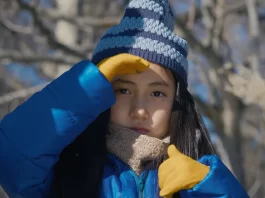The Legend of Zelda: Breath of the Wild is Nintendo’s first modern venture into the popular open-world gaming genre. Despite competing with industry juggernauts like Far Cry and The Elder Scrolls, Breath of the Wild is able to carve a unique identity for itself by borrowing successful elements from other game titles and fusing them with the charming characters and style that the Zelda franchise is known for. The game offers an incredible amount of flexibility to its players, and as a result, no two players are going to play through the game identically.
From the beginning, the player can choose to travel in any direction and climb almost any surface. This sense of freedom is liberating and rewarding. From the shifting sands of the Gerudo Desert to the icy peaks of the Hebra Mountains, the various settings are extremely diverse and will require the player to adapt to their harsh climates. Across this vast world are various puzzles, bustling towns, and complex dungeons that will test either the player’s wit or fighting skills in order to level up and progress through various storylines. This feature is what separates Breath of the Wild from most other Zelda titles, as many of the franchise’s games are structured linearly. This is important to consider when contemplating whether or not a potential buyer will enjoy the experience.
The game’s combat systems are ingeniously integrated with the mechanics used to solve puzzles, making the abilities feel dynamic. There are four key abilities: a freezing skill to create platforms, a magnetic skill to move metal, a power to stop time, and a skill to materialize bombs as you need them. These abilities are used in tandem with the plethora of melee and ranged weapons you can steal from enemies. Breath of the Wild changes its weapons-based combat by introducing a degradation system that only allows users to strike with each weapon so many times before it breaks. While it is more realistic, I felt that the feature discourages players from using their powerful loot, for fear of breaking it. Often I would only use my best gear when fighting boss characters or stronger enemies.
While the game world is extremely vast and detailed, other elements of the title are less impressive. The game’s framerate slows down significantly when there are a large number of enemies or visual effects onscreen at once. These framerate drops are relatively frequent, but never deterred me from playing the game. These issues are present on both the Nintendo Switch and Wii U versions of the game.
Additionally, the game’s music and story are typical for the franchise. There are a few exciting musical and narrative moments, but for the most part these elements complement the explorative adventure in a subtle fashion.
Breath of the Wild is difficult but does show mercy to newcomers, though it is through this level of challenge that the game feels satisfying. Fans of both open-world games and Zelda should not miss this stellar title. The negative elements do not come close to outweighing the positive components of this addicting quest.



